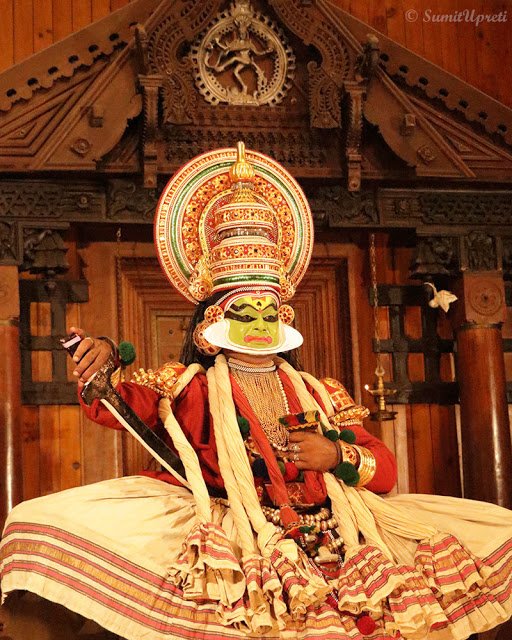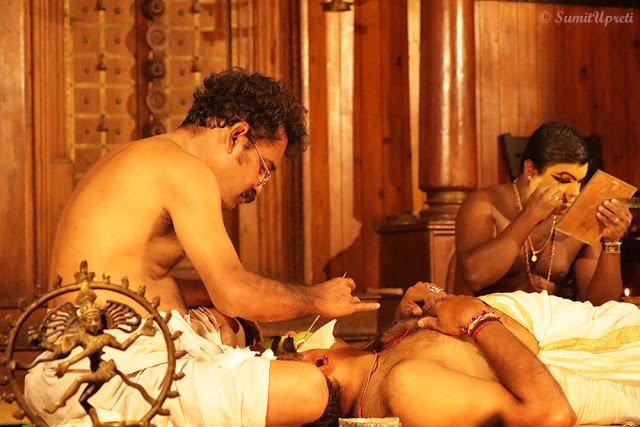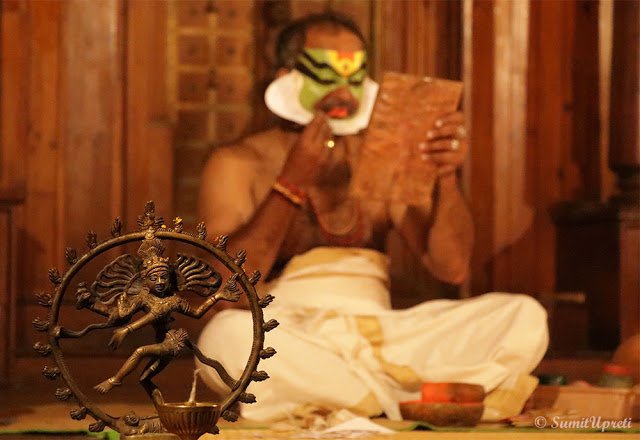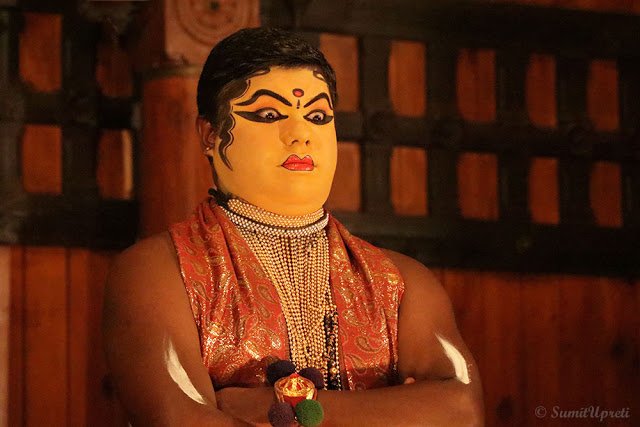During my recent trip to Kerala, also named as “god’s own country”, I had the opportunity to witness the traditional Kathakali performance. My first experience of Kathakali performance left me spellbound for over two hours. It’s not a performance with a few novice artists moving around on stage; it’s a display of an art inherited from over hundreds of years by artists committed for lifetime.
Kathakali – A performance that embraces a rich and happy blending of dance, drama, devotion, music, costumes, colors, make-up and storytelling. It derives its meaning from Katha (story) and Kali (art and performance).
Kathakali is a form of sign language accompanied with elaborate colorful makeup and costumes. There is a specific codified meaning of each color and costume, and the makeup of artist is based on the characters and story being performed for the day. Complete face is painted as if wearing a mask; lips, eyelashes and eyebrows are made to look prominent. As a tradition, artists openly perform the make-up on stage before the start of each show. This makes each performance unique and thrilling.
All the colours used in make-up are obtained from natural substances and herbs like rice powder, flower extracts, colorful stones, etc. Coconut oil is used as base for mixing of these stone powders.
Kathakali is said to be the most difficult art to execute on stage. Nearly six years of dedicated practice is required before an artist is ready to perform on stage. The artist is trained to master the art of facial expressions to display the emotions and mood of character, and hasta mudras (hand gestures) replacing the words or dialogues in accordance with the padams (verses) being sung. Facial muscles play an important role with extensive movement of eyebrows, eyeballs, and lower eye-lids. There are nine facial expressions as per classical Sanskrit text of Natya Shastra called Navarasa, which is found in other classical Indian dances as well. The nine emotions are Sringara (love, pleasure), Hasyam (comic, laugh), Karunam (pathetic, sad), Raudram (anger, fury), Viram (vigor, heroic), Bhayanakam (fear, worry), Bibhatsam (disgust), Adbhutham (wonder, curious) and Shantam (peace, tranquility). Performances are based on mythological stories from the Hindu epics.
The characters in kathakali are broadly divided into three gunas of nature as per hindu philosophy: satvika, rajasika and tamasika. It is believed that each individual born possesses all these three gunas, what differs is the proportion and its usage. It is the interplay of these gunas which actually defines the character of a person, both on stage and off stage.
Music is an another integral part of Kathakali performance setting the rhythm and triggering emotions resonating with the nature of scene. Although that performance is long over, yet the beauty of the art leaves me mesmerized each time I think about it. As I believe, everything cannot be captured in words or pictures, somethings can only be experienced!
I hope this blog helps you connect back to classical Indian art and cherish its diversity and vividness. All the photographs represented above were captured at Kerala Kathakali Centre, Fortkochi. It is one of the oldest remaining theatre providing an incredible theatrical experience genuinely capturing the spirit of numerous traditional art forms of Kerala through daily shows, 365 days a year.
I would love to hear from you all, share your experiences, questions or thoughts in comments below or mail me at sumitupreti123@gmail.com . Subscribe to my blog “living in the moment” to receive notifications of upcoming blogs in your email.
I would love to hear from you all, share your experiences, questions or thoughts in comments below or mail me at sumitupreti123@gmail.com . Subscribe to my blog “living in the moment” to receive notifications of upcoming blogs in your email.
Travel the real world. Happy EXPLORING!!!






